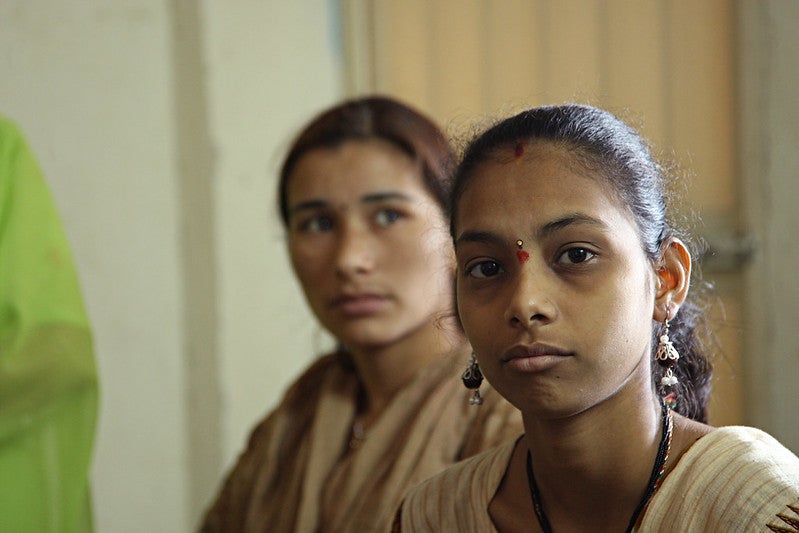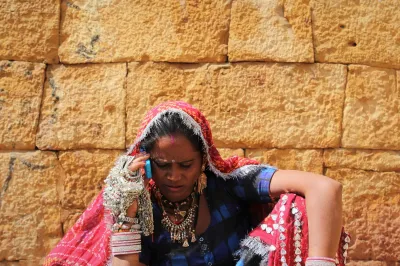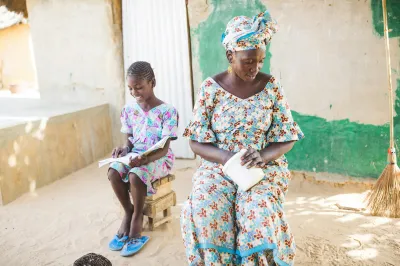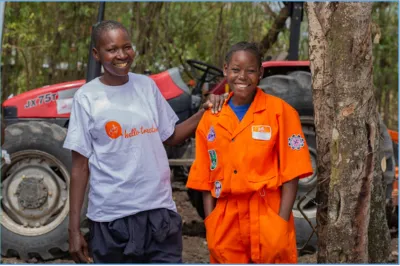What Drives the Financial Inclusion Gender Gap for Young Women?

There are stubborn differences in the rates at which men and women access, use and benefit from formal financial services. As an initial step toward understanding what drives these differences, CGAP worked with the Global Findex team to analyze how the account ownership gender gap varies across regions and age groups.
CGAP’s earlier analysis showed that young women are among the most socially excluded populations, and we wanted to understand how their social exclusion relates to their financial exclusion. We found that the gender gap correlates strongly with labor force participation and access to mobile money. Our exploration reveals areas where deeper analysis could illuminate whether these correlations are causal, and what other factors may be driving differences between the extent to which men and women access, use and benefit from financial services.
Global gender gap numbers mask significant regional differences
The gender gap between men and women remains significant for all age groups in developing economies, averaging 9 percentage points. While differences between age groups are insignificant at the global level, various patterns emerge when the younger age groups are analyzed on a regional basis. For example, in the Middle East and North Africa, the gender gap among adults ages 18 to 22 is similar to the developing economies average, but it increases with age to about 22 percentage points among adults ages 29 to 39. Sub-Saharan Africa's gender gap is 8 percentage points among the younger cohort; among the older group, the gap is twice as large.

The patterns are even more striking when large countries dominating certain regions are excluded from the analysis. When India is removed from the South Asia region, for example, the 16 percentage point gap in account ownership for the 18 to 22-year-old cohort increases to 21 percentage points. Similarly, the 18 percentage point gap for 23 to 28-year-olds shoots up to 34 percentage points. India has made significant progress in expanding financial inclusion through Jan Dhan accounts, which may have helped decrease the gender gap to 6 percentage points by 2017; although men are still more likely than women to use their accounts for payments or savings. Meanwhile, in East Asia and the Pacific, the gender gap has actually reversed among the youngest age group, with women being more likely than men to own an account. When China is removed from the analysis, all three age groups show a reverse gender gap.
What drives patterns in the gender gap?
The Global Findex collects data on why unbanked adults go without accounts. Generally, young women and men report the same barriers to account ownership, including lack of affordability, distance to financial institutions and lack of necessary documentation. But there are some exceptions. In developing economies, for example, unbanked women ages 23 to 39 are on average more likely than their male counterparts to report that they don’t have an account because someone else in the family already has one.
There are also some signs that access to mobile money accounts is more equal than access to financial institution accounts. In Sub-Saharan Africa, there is no gender gap among youth who only use a mobile money account, but there are significant gender gaps in financial institution account ownership. Strikingly, the use of mobile money is the same among men and women in the region even though men, on average, are more likely than women to own a mobile phone.

But of all the factors we analyzed, labor force participation has the strongest correlation with account ownership across developing economies. On average, account ownership is equal among young men and women who are active in the labor force. But among young adults who are out of the labor force, account ownership is 12 percentage points higher among men. Mobile money again serves as an equalizer in Sub-Saharan Africa. Overall, we find a significant gender gap in the region, but it is narrowed by the equal use of mobile money among young adults out of the workforce.

One potential reason why account ownership is higher among young women active in the labor force is that they have clear needs for financial services. Accounts offer working women a way to receive wages, save for the future, make payments and access credit. However, for young men, the link between account ownership and labor force participation is weaker. On average, account ownership rates are similar among men regardless of whether they're self-employed or out of the workforce.
Yet this does not necessarily mean that women out of the workforce have no financial management needs. Other forms of research — such as financial diaries — suggest that women play important roles in household financial matters. Women tend to make high-frequency, low-denomination transactions and are often responsible for managing daily expenses and smoothing financial risk. Mobile money is well-suited to these needs, and in economies where it is widely available, mobile money appears to attract young women out of the workforce at equal rates as young men. However, too little is yet known about how well that tool is meeting the financial management needs of these women.
What more can we learn by analyzing other aspects of inclusion related to usage in addition to access?
CGAP is keen to better understand the underlying reasons for differences in men’s and women’s access to, use of and benefits from formal — and informal — financial services over the course of their lives. We are asking ourselves:
- In which age groups do patterns shift?
- What appears to be driving these patterns?
- How do indicators of access and usage correlate to outcome-level indicators, such as measures of empowerment, resilience and financial health?
In the months ahead, we will be diving deeper into country-level datasets and collaborating with partners to answer these questions and help address the gender gap.




Add new comment